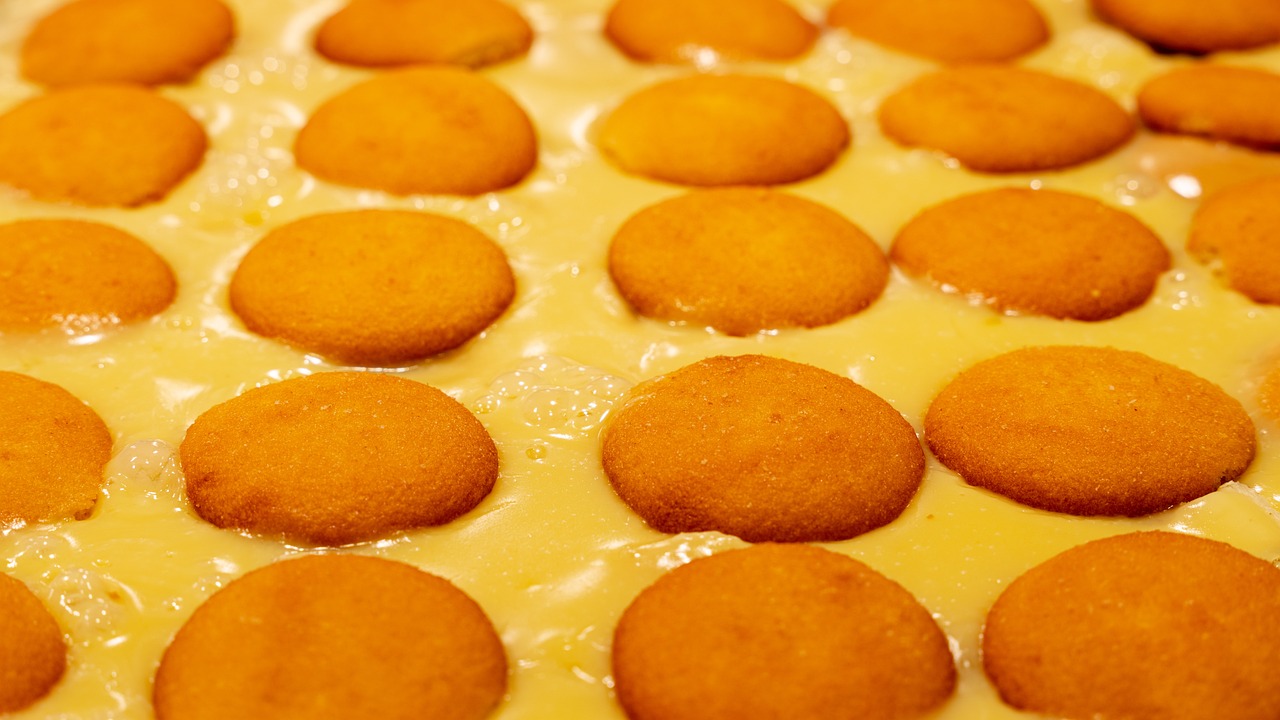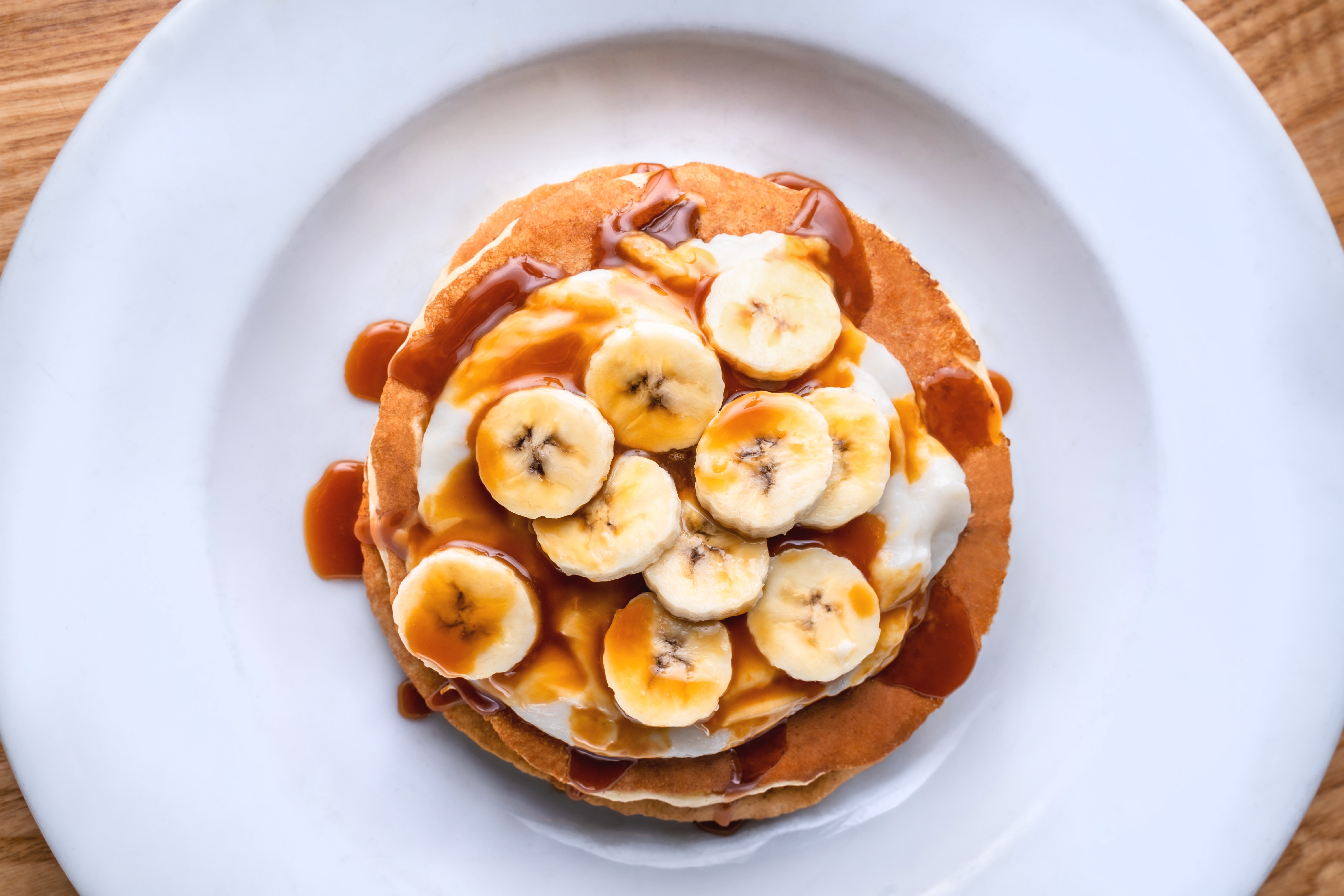A banana pudding is a sweet dish made of layers of vanilla pudding, vanilla wafer cookies, and fresh banana segments. A top layer of toasty meringue was traditionally called for in banana pudding recipes. The meringue was eventually substituted by store-bought or homemade whipped cream. With a history spanning more than 50 years, banana pudding has a strong, authentically Southern identity. The dessert has a longer history than that.
What is Banana Pudding?
Banana pudding is a type of pudding that often consists of layers of sweet custard with vanilla flavoring, cookies (typically vanilla wafers or ladyfingers), and fresh banana slices served in a dish with whipped cream or meringue on top. Although it is frequently linked to Southern American cuisine, it can be found everywhere in the nation and in certain places.
Additionally, it is layered and contains custard, fruit, sponge cake, and whipped cream, much like an English trifle. Banana pudding can be made by baking it or by chilling it; the latter method is more common, especially among home cooks. Genuine custard has also been replaced in several recipes by vanilla or banana pudding. Wafers are not used in other recipes.
How to Make Banana Pudding?
Ingredients:
The banana pudding only requires a few ingredients, and you can have the dessert ready to serve in no time!
- Milk: We used whole milk, but you can use any milk you have on hand. Ensure that the vanilla pudding you use is instant and doesn’t need to be cooked. Although banana pudding might also work well, we used vanilla.
- Vanilla extract—Homemade vanilla gives the pudding the greatest flavor. Enhances the smoothness and sweetens the pudding with sweetened condensed milk.
- Vanilla wafers – we recommend Nilla wafers, but you can substitute your own brand. Alternatives are listed below.
- Heavy whipping cream: The whipped cream gives the pudding more richness. The pudding’s top layer is made sweeter by the addition of powdered sugar. You may completely omit it.
- Bananas – The pudding’s amazing flavor is derived from the use of fresh banana slices. When you need to offer something but don’t want to turn on the oven, this no-bake dessert is the ideal treat.
Make the Pudding:
- Beat the cold milk, vanilla, and pudding until thick in a big basin. Milk condensed is beaten in.
- Beat the heavy whipping cream until it has firm, fluffy peaks in a separate bowl. 2/3 of the whipped cream should be gently folded into the pudding using a spatula.
- The leftover whipped cream should be combined with the powdered sugar, then chilled until required.
Instructions with pictures on how to make pudding filling
Assemble:
- Place 1/4 of the vanilla wafers and 1/4 of the bananas in the bottom of your trifle bowl. Over the bananas/wafers, spread 1/4 of the pudding. Continue with the additional layers.
- Then, garnish the pudding as you like by spreading the remaining whipped cream over the middle. After two hours, services are covered and chilled.
Can you Freeze Banana Pudding?
Due to its excellent blending of flavors and textures, banana pudding is a well-liked dessert. The sweet flavor of the banana slices and the rich cream pair perfectly with the delicious crunch of the vanilla wafers. However, should you freeze the dessert for later if you created a sizable amount of banana pudding or if you have leftover banana pudding from a retail purchase? Even though we do not advise it, banana pudding can be frozen, if only to prevent wastage.
How to Freeze Banana Pudding?
There is a way to keep bananas from oxidizing and maintain their bright color. However, if you cooked the banana pudding yourself, this approach will only work!
Freezing Homemade Banana Pudding
Fill a small dish with lemon juice before making the banana pudding. Just before putting the pudding’s ingredients together, dip the banana slices into the juice. Lemon juice’s citric acids will stop oxidation. You can proceed to mash the fruit for the pudding after drizzling the banana slices with lemon juice.
The bananas should not turn a dark brown after the pudding has been frozen and defrosted; rather, they should keep their original light color.
The banana pudding should be made as usual. Save a part of the pudding before serving if you intend to freeze some of it; do not consume the entire batch. The pudding freezes better when it is more recent.
When the pudding is ready to be frozen, scoop a serving into a freezer-safe, airtight container. After that, wrap the container in cling wrap and fasten the lid. Place in the freezer after writing the storage date.
Storing Leftovers of Store-Bought Banana Pudding
It is significantly more difficult to store leftover banana pudding because the ingredients cannot be prepared ahead of time. The dessert has been put together from every component. The pudding’s original box is also ineligible for usage. The original packing doesn’t offer enough defense against the frigid temperatures.
Scoop the pudding carefully into a freezer-safe, airtight container to prepare it. After that, wrap the container in cling wrap and fasten the lid. Place in the freezer after writing the storage date.
What can We do with the Leftover Banana Pudding?
You may use any leftover banana pudding to make the following treats in addition to serving the dessert as is:
Make Frozen Banana Pudding
Your frozen banana pudding may be recycled by being made into banana pudding ice pops! Simply stir milk into the leftover pudding until it is smooth. To make ice pops, pour the mixture into a mold. Insert the wooden sticks after giving the mold a light tap to get rid of any air bubbles. Defrost the mold by placing it there. Once the ice pops have solidified, serve.
To Make Ice Cream
You may use any leftover banana pudding to make ice cream if you enjoy preparing it at home. Cut the pudding into tiny pieces using a plastic spatula. Pour the leftover pudding over the vanilla ice cream as it is being processed, blending thoroughly. Once frozen solid, prepare the ice cream as usual and serve.
Produce Bread Pudding
Combine milk, eggs, sugar, and vanilla extract to make a milk combination. In a lined jar for leftover banana pudding, pour the mixture. Mix the ingredients thoroughly by folding them in. Bread cubes should be placed on top and allowed to soak up the milk mixture. Any desired topping should be added before baking. Serve right away after baking at 325° Fahrenheit or until golden brown.
How to Thawing Banana Pudding?
Since banana pudding contains delicate components, it won’t last very long in the freezer. For the best flavor, we advise eating the pudding within 1 to 2 weeks. To prevent the pudding from becoming mushy, thawing should be done gradually. Simply place the frozen banana pudding in the refrigerator and let it thaw there for the entire night. Once thawed, serve right away; do not freeze any leftovers again.
How to Store Bananas in Slices?
It is better to wait to cut into sliced bananas until you are ready to eat because they quickly lose their color. Lemon juice, on the other hand, reduces pH levels and prevents browning by being sprinkled on them. Put them in the refrigerator using the lemon method, either wrapped in plastic wrap or in an airtight food storage bag or container. Sliced bananas can remain fresh in this manner for three to four days.
Bananas can stay on your countertop for two to six days, depending on how ripe they are when you buy them. Purchasing a banana holder with a hook is worthwhile if you always have bananas on hand. Bananas bruise easily when placed on top of one another, thus hanging the fruits prevents this from happening. The fruits should also be kept out of direct sunlight as the sun’s heat might lead them to ripen quickly.
Bananas can be frozen and kept fresh for a longer period of time, much like many other fruits. Banana bread is always the solution, though, if things get out of hand and you arrive home to a pile of charred bananas on your countertop.
Can Bananas be Stored in the Fridge?
Bananas may definitely be kept in the refrigerator. Just bear in mind that the cool, dry weather slows the ripening process, which is why supermarkets don’t keep their bananas chilled. In other words, green, underripe bananas will probably stay that way if placed in the refrigerator.
Additionally, putting bananas in the refrigerator too soon can actually sabotage the fruit and result in “freezing injury,” according to the US Department of Agriculture, which prevents ripening and makes bananas taste bitter.
Benefits of Eating Bananas for Health
1. A Healthy Heart
Bananas’ potassium, magnesium, and vitamin content all promote heart health. Bananas’ high potassium and low salt content, in addition to their favorable effects against high blood pressure, minimize the risk of cardiovascular disease. Also Read: 5 Potassium-Rich Foods That Are Amazingly Healthy – Infographic
2. Encourage Digestive Wellness
An excellent item to eat when treating diarrhea is a banana. The BRAT diet, which consists of bananas, rice, applesauce, and toast, is advised for the nutritional control of diarrhea. When you experience bouts of diarrhea that leave you feeling weak, bananas replace the electrolytes you lose, such as potassium. The resistant starch in bananas supports intestinal health and encourages regularity, according to a 2017 study that was published in Nutrition Bulletin.
3. Increase Mood and Memory Power
The high quantities of tryptophan in bananas are converted to serotonin, the brain chemical that improves mood and memory and aids in the treatment of depression. Magnesium and vitamin B6 are both beneficial for relaxing the muscles and promoting restful sleep.
5. Helps People Lose Weight
According to the Journal of Nutrition, the inclusion of dietary fiber and resistant starch in bananas is crucial for weight loss because it slows digestion, makes you feel fuller, maintains a healthy blood sugar level, and burns fat for energy. Also read: Infographic: Top 5 Superfoods for Weight Loss
6. Relieves Heartburn and Ulcers
Bananas are a heartburn remedy. They reduce discomfort by bringing the pH of the stomach’s mucous layer into balance. The presence of fiber helps food pass through the colon more quickly, reducing reflux.
Regular consumption of bananas helps to prevent stomach ulcers by strengthening the stomach’s barrier of protective mucus and reducing the risk of hydrochloric acid damage. Bananas remove stomach microorganisms that can result in stomach ulcers thanks to their protease inhibitors.
Reference: Bioactive compounds in banana and their associated health benefits – A review
Conclusion
Which temperature will best preserve bananas? If different temperatures are tried on the bananas, the chamber that is at room temperature will keep the fruit fresher longer because it is the ideal temperature for growing bananas. The container was the greatest place for the banana to be preserved because it was at room temperature. My theory was accurate because the room virtually has the same temperature as the environment where bananas thrive.
When I checked it on the fifth day, the banana that was in the zip-lock bag and kept at room temperature in the refrigerator during the experiment had begun to turn a little green again. People benefit from this since they now know where the ideal location is for preserving bananas. By arranging the bananas differently and using various fruits, we can improve this experiment.

